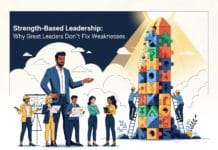
The role of Human Resources has evolved far beyond administrative tasks and paperwork. Today, HR stands as a central figure in shaping business strategy and driving organizational success. Companies that once viewed HR as a support function now recognize its power as a strategic partner. In a fast-changing business environment, HR professionals contribute directly to growth through talent development, culture building, and aligning human capital with business goals. They no longer just manage people — they empower them to deliver value. HR leaders help shape the future by working closely with executives and department heads to meet long-term business objectives.
- From Administrative Function to Strategic Driver
HR once focused solely on hiring, payroll, and compliance. But that limited scope has transformed dramatically over the years. HR professionals now play a vital role in strategic decision-making. They understand company goals and create workforce plans that align with those goals. This shift from a transactional department to a strategic partner allows HR to drive performance through data, talent analytics, and organizational insights. Rather than reacting to problems, modern HR anticipates needs, designs forward-thinking policies, and becomes a key contributor to growth and competitiveness across all industries.
- HR’s Influence on Leadership and Business Strategy
Human Resources helps shape leadership by identifying, developing, and supporting the leaders of tomorrow. A strong HR department works closely with top executives to ensure leadership development aligns with business priorities. They identify potential leaders early and build customized growth paths for them. This alignment fuels innovation and agility, enabling businesses to adapt to change quickly. Moreover, HR serves as a bridge between executive vision and team execution. Many professionals looking to lead HR transformation pursue online MBA programs human resource management to build the strategic and analytical skills needed to thrive in this high-impact role. These programs offer real-world insights that fuel leadership growth.
- Talent Acquisition as a Growth Strategy
Hiring the right people directly affects a company’s bottom line. Smart talent acquisition strategies ensure that every new hire adds measurable value. HR uses data-driven recruitment methods to target candidates who align with the company’s culture and future direction. They don’t just fill vacancies — they build teams that perform. Through employer branding, market research, and continuous candidate engagement, HR attracts top-tier talent. When HR aligns hiring efforts with strategic business objectives, companies reduce turnover, improve productivity, and gain a competitive edge. That makes recruitment not just a process, but a growth strategy in its own right.
- Performance Management That Drives Results
Performance management goes far beyond annual reviews. Today’s HR leaders design systems that encourage continuous feedback, clear goal-setting, and accountability. They empower managers to coach rather than critique. This consistent feedback loop increases motivation and productivity across all departments. By aligning individual goals with organizational objectives, HR creates a culture of ownership and achievement. Data plays a key role here, too — performance metrics help track results, recognize top performers, and identify areas for development. With the right framework, HR can transform a stagnant workplace into a high-performing culture where everyone understands how their work contributes to growth.
- Learning and Development as a Competitive Advantage
Employee development plays a huge role in long-term growth. HR leads this effort by creating learning and development programs that build essential skills and prepare teams for future challenges. Rather than wait for problems to arise, HR invests in upskilling and reskilling early. This keeps teams agile and capable of adapting to new technologies or market shifts. HR also encourages a culture of continuous learning where curiosity and innovation thrive. Companies that invest in development experience higher retention and stronger team performance. By prioritizing learning, HR not only boosts individual careers but also drives innovation and business resilience.
- Building a Culture That Supports Growth
Company culture shapes how people think, act, and perform. HR plays a central role in creating a work environment where innovation, collaboration, and accountability thrive. When HR intentionally builds a culture rooted in shared values and clear expectations, employees feel motivated to contribute their best. A strong culture attracts talent and keeps existing employees engaged. HR drives this by reinforcing behaviors that align with business goals, celebrating wins, and encouraging open communication. It’s not about perks or slogans — it’s about shaping everyday habits and beliefs. A culture designed with growth in mind becomes a powerful engine for long-term success.
Human Resources has evolved into one of the most strategic functions in any organization. Far from just managing people, HR now helps shape business direction, lead cultural transformation, and drive measurable growth. From hiring and training to analytics and change management, HR touches every part of the business. When done well, it fuels innovation, enhances agility, and helps companies stay competitive in a rapidly changing world. By acting as a true business partner, HR not only supports growth — it creates it. Organizations that recognize and empower this role position themselves for long-term success built on people-first strategies.





